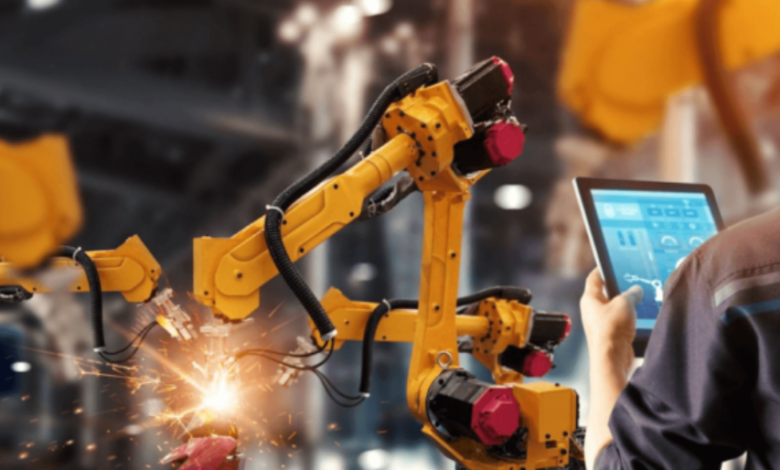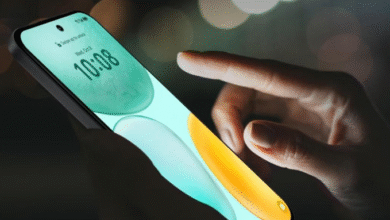Unlocking Excellence in Manufacturing with Advanced Surface Finishing Solutions

In today’s competitive industrial world, product quality isn’t just about precision or durability—it’s also about surface perfection. Whether it’s a consumer-facing product like a smartphone casing or a high-performance aerospace component, the final touch is what often defines excellence. This is where surface finishing solutions become an integral part of modern manufacturing, playing a crucial role in aesthetics, functionality, and longevity.
As industries demand tighter tolerances, better corrosion resistance, and enhanced product appeal, surface finishing solutions have evolved into a sophisticated, essential segment of the production process. From traditional techniques to advanced nanotechnology coatings, the surface treatment industry has expanded to meet the needs of global manufacturing.
What Are Surface Finishing Solutions?
Surface finishing solutions refer to a broad spectrum of mechanical, chemical, and electrochemical processes applied to the surface of materials—primarily metals, polymers, ceramics, and composites. These processes modify surface properties to improve appearance, texture, durability, corrosion resistance, adhesion, conductivity, or hygiene.
Unlike basic cleaning or polishing, surface finishing solutions are designed with specific end-use goals in mind. Some treatments are used to prepare the surface for subsequent operations like painting, bonding, or welding, while others serve as the final finish to boost visual appeal and mechanical strength.
See also: Leveraging Technology to Boost Business Efficiency
The Key Benefits of Surface Finishing Solutions
1. Improved Corrosion Resistance
Corrosion is the arch-nemesis of metal-based components, especially in marine, automotive, and infrastructure environments. Surface treatments like anodizing, plating, and powder coating provide a protective barrier that inhibits moisture and chemical interaction.
2. Enhanced Aesthetic Appeal
Surface finishing isn’t only functional—it’s also cosmetic. Finishes such as brushed metal, mirror polish, matte texture, and colored coatings allow manufacturers to meet branding and visual expectations.
3. Wear and Friction Resistance
In applications involving friction, such as gears, bearings, or moving machine parts, certain finishes improve surface hardness and minimize wear. Techniques like nitriding, hard anodizing, and laser treatment are common.
4. Improved Adhesion for Coatings
Before applying paints, adhesives, or sealants, surface finishing solutions are used to roughen or clean the substrate to improve adhesion.
5. Hygienic and Sterile Surfaces
In industries such as medical devices, food processing, or pharmaceuticals, surface treatments are used to create smooth, non-porous surfaces that are easy to sterilize and resist microbial growth.
Common Types of Surface Finishing Solutions
Different industries require different outcomes, and hence, surface finishing solutions can be classified based on their method of application and final effect.
1. Mechanical Finishing
These are physical processes applied through abrasives or tools. Common examples include:
- Grinding: Used to achieve fine tolerances and smooth surfaces
- Polishing: Increases gloss and aesthetic finish
- Blasting (sand, bead, or shot): For cleaning, texturing, or preparing surfaces
2. Chemical Finishing
Chemically alters the surface to achieve properties like passivation, etching, or coating:
- Pickling: Removes oxides and impurities using acid
- Etching: Creates patterns or prepares surfaces for bonding
- Passivation: Forms a protective oxide layer, especially on stainless steel
3. Electrochemical Finishing
Combines electricity and chemical reactions for coating or treatment:
- Electroplating: Deposits metal layers (zinc, chrome, nickel) for corrosion resistance
- Anodizing: Particularly for aluminum, enhances oxide layer for durability and colorability
- Electropolishing: Removes microscopic burrs and improves smoothness
4. Thermal and Laser Finishing
Used for hardening or modifying surface properties through high energy:
- Laser hardening: Localized surface treatment without affecting core properties
- Plasma spraying: Applies ceramic or metallic coatings
- Flame treatment: Improves surface tension for adhesion on plastics
Industries That Rely on Surface Finishing Solutions
Aerospace
In aerospace, components must withstand extreme pressure and temperature. Advanced coatings resist corrosion, reduce friction, and ensure safety under stress.
Automotive
From decorative trims to underbody protection, the automotive sector heavily uses surface finishes to improve durability and maintain brand appearance.
Electronics
Electronics manufacturers depend on finishes that provide conductivity, prevent oxidation, and maintain micro-scale tolerances. Gold and silver plating are commonly used.
Medical Devices
Surfaces of surgical tools and implants must be ultra-smooth, corrosion-resistant, and sterilizable. Passivation and electropolishing are essential treatments in this field.
Construction
Beams, rebars, and facades all benefit from galvanized coatings or powder coatings to survive the rigors of outdoor exposure.
Choosing the Right Surface Finishing Solution
Not every surface finishing technique fits all materials or applications. Factors that determine the choice include:
- Material type: Aluminum, stainless steel, titanium, and plastics all respond differently
- End-use environment: Exposure to chemicals, moisture, temperature, or friction
- Regulatory compliance: Certain industries have finishing standards (e.g., FDA, ASTM)
- Cost and scalability: Some finishes are ideal for mass production, while others suit prototyping
A smart approach involves working closely with finishing experts or suppliers who offer customizable surface finishing solutions and testing protocols.
Innovation in Surface Finishing: The Future is Now
The future of surface finishing solutions is being reshaped by innovation. Here are some emerging trends:
1. Eco-Friendly Finishing
Environmental concerns have led to the development of water-based coatings, low-VOC finishes, and chromium-free plating. Sustainable finishing is now a top priority.
2. Nanotechnology Coatings
Nano-coatings provide anti-bacterial, anti-fogging, or hydrophobic properties. They’re revolutionizing electronics, medical, and consumer goods markets.
3. Additive Finishing Techniques
3D printed parts can now be finished using specialized techniques tailored to additive manufacturing. Surface smoothing and sealing are key focus areas.
4. Smart Coatings
These advanced surfaces can change properties in response to temperature, light, or pressure. Imagine a car paint that self-heals from scratches or a building façade that adjusts reflectivity.
Conclusion
Surface finishing solutions are no longer just optional—they’re a competitive necessity in manufacturing. From improving performance and aesthetics to ensuring safety and compliance, these treatments shape how products function and last.
Whether you’re an OEM, a product designer, or a manufacturing partner, understanding and selecting the right surface finishing solutions can elevate your brand and ensure customer satisfaction. As technology evolves, we can expect even more efficient, sustainable, and innovative finishing techniques to become standard in the industrial world.





